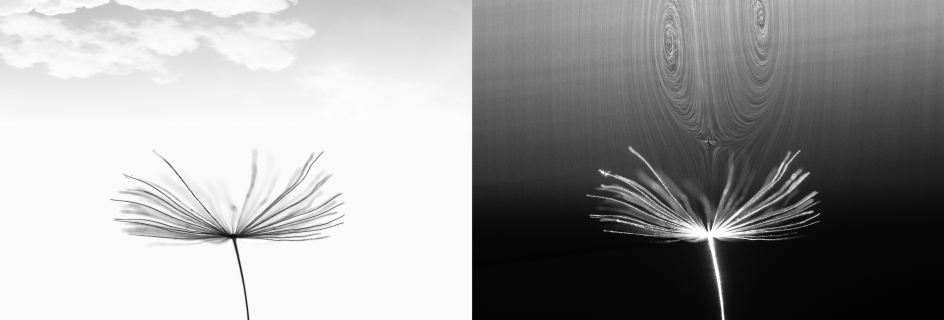Post date:
Applied Mathematician Cathal Cummins together with colleagues Ignazio Maria Viola and Enrico Mastropaolo from Engineering and Madeleine Seale and Naomi Nakayama from Biology in Edinburgh have won the annual photo competition run by the EPSRC-funded UK Fluids Network. Their entry is called ‘Halo vortex lifts dandelion seeds’; here, Cummins describes his work and the image:
“Plants have evolved ingenious ways to lift their seeds. Some glide like paper planes; others rotate like helicopters. The dandelion uses a ‘parachute’, comprising a bundle of some 100 filaments to fly. These parachutes are highly porous (>90% empty space), yet can carry seeds over 100km. We wanted to know why nature evolved such imperfect parachutes. We wanted to reveal the underlying flight mechanism of the dandelion.
We built a vertical wind tunnel, designed so that dandelion seeds can hover. Then, we inject smoke into the airflow and use a light sheet to illuminate a thin slice of the flow. Our experiments revealed that dandelion seeds generate a drag-enhancing vortex unlike any observed before in nature. This confers 4-5 times more aerodynamic loading than a conventional design of parachute and far superior flight stability. Hairy structures such as these are found everywhere in nature, and our discovery signals a new mode of locomotion in small organisms.”



